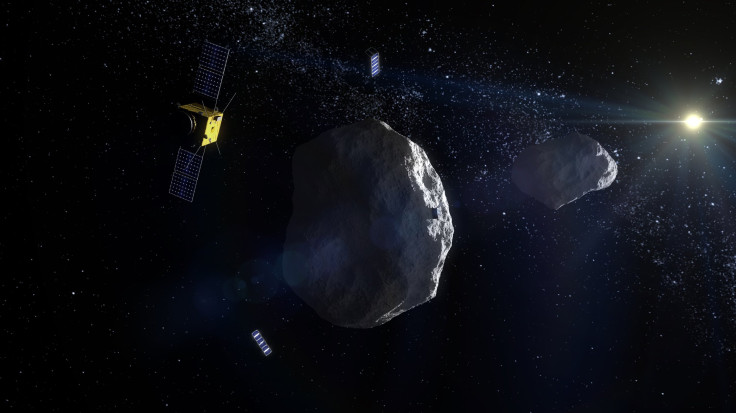NASA, ESA Proceeding With Asteroid Impact Deflection Project

NASA and the European Space Agency (ESA) will officially meet next week to discuss the details of a joint mission that involves deflecting asteroids. The focus of the upcoming mission will be the sub-kilometer near-Earth asteroid Didymos and its moon.
The ESA and NASA’s joint mission is known as the Asteroid Impact Deflection Assessment (AIDA). For the project, NASA will first launch its Double Asteroid Redirection Test (DART) spacecraft to intentionally hit the moon of Didymos at a speed of about 14,700 miles per hour.
The resulting impact will then be recorded by the ESA’s Hera mission. The information that the ESA will gather will be used to create computer models simulating collisions, which will then be used as the basis for real-world asteroid defenses.
According to Ian Carnelli, who manages Hera for the ESA, the missions from the two agencies will provide a better and more complete understanding of asteroid-deflection techniques.
“DART can perform its mission without Hera – the effect of its impact on the asteroid’s orbit will be measurable using Earth ground-based observatories alone,” he said in a statement. “But flying the two missions together will greatly magnify their overall knowledge return.”
“Hera will, in fact, gather essential data to turn this one-off experiment into an asteroid deflection technique applicable to other asteroids,” Carnelli added. “Hera will also be the first mission to rendezvous with a binary asteroid system, a mysterious class of objects believed to make up around 15% of all known asteroids.”
If everything goes well, NASA will deploy the DART spacecraft sometime in July 2021. It will be launched through SpaceX’s Falcon 9 rocket. The spacecraft is expected to reach Didymos’ moon by September 2022. During this time, NASA expects the asteroid to be about 6.8 million miles from Earth.
The meeting between the ESA and NASA will take place during the three-day International AIDA Workshop. It will take place on Sept. 11 to 13 at the Aula Ottagona in central Rome. Aside from NASA and the ESA, representatives from other scientific agencies and organizations from different parts of the world will also participate in the upcoming workshop.
© Copyright IBTimes 2024. All rights reserved.





















